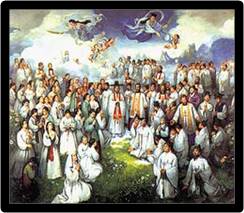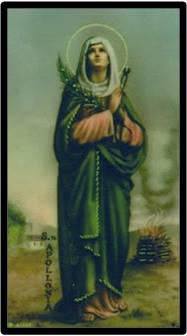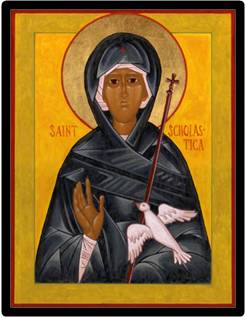FEBRUARY 6 - ST. PAUL MIKI AND COMPANIONS

Paul Miki was born to a wealthy family at Tsunokuni in Japan. His father Miki Handayu was a military leader.
St. Francis Xavier brought the Good News of Jesus to Japan in 1549. Many received the Word and were baptized by St. Francis himself. Although Francis later left to continue his mission in other countries, the faith had grown in Japan.
Paul Miki felt the call to follow Jesus. He studied at the Jesuit college at Azuchi and Takatsuki and became a Jesuit priest in 1580. He too worked hard as a Catechist and was able to bring many people to Jesus.
By 1587 there were over two hundred thousand Catholics. Missionaries from various religious orders came to work in Japan. Japanese priests, religious and lay people lived the faith joyfully.
In 1597, forty-five years after St. Francis Xavier came to Japan, a powerful Japanese official, Hideyoshi, listened to the gossip and lies of a Spanish merchant. The merchant said that the missionaries were traitors of Japan who would cause Japan to be defeated by Spain and Portugal.
Hideyoshi overreacted and had twenty-six people arrested. The group included six Franciscans from Spain, Mexico and India; three Japanese Jesuit catechists, including St. Paul Miki; and seventeen Japanese Catholic lay people, including children.
The twenty-six were led to the place of execution outside Nagasaki. Each of them was tied to a cross with chains and cords and had iron collars clamped around their necks. Then they were killed with spears. They died almost immediately.
These twenty-six martyrs are sometimes called the martyrs of Nagasaki and the martyrs of Japan. Their blood-stained clothes were treasured by the Christian community and miracles happened through their intercession.
Each martyr was a gift to the Church. Before he died on February 5, 1597, St. Paul Miki fearlessly gave a sermon from the cross as he encouraged the Christian community to be faithful until death.



